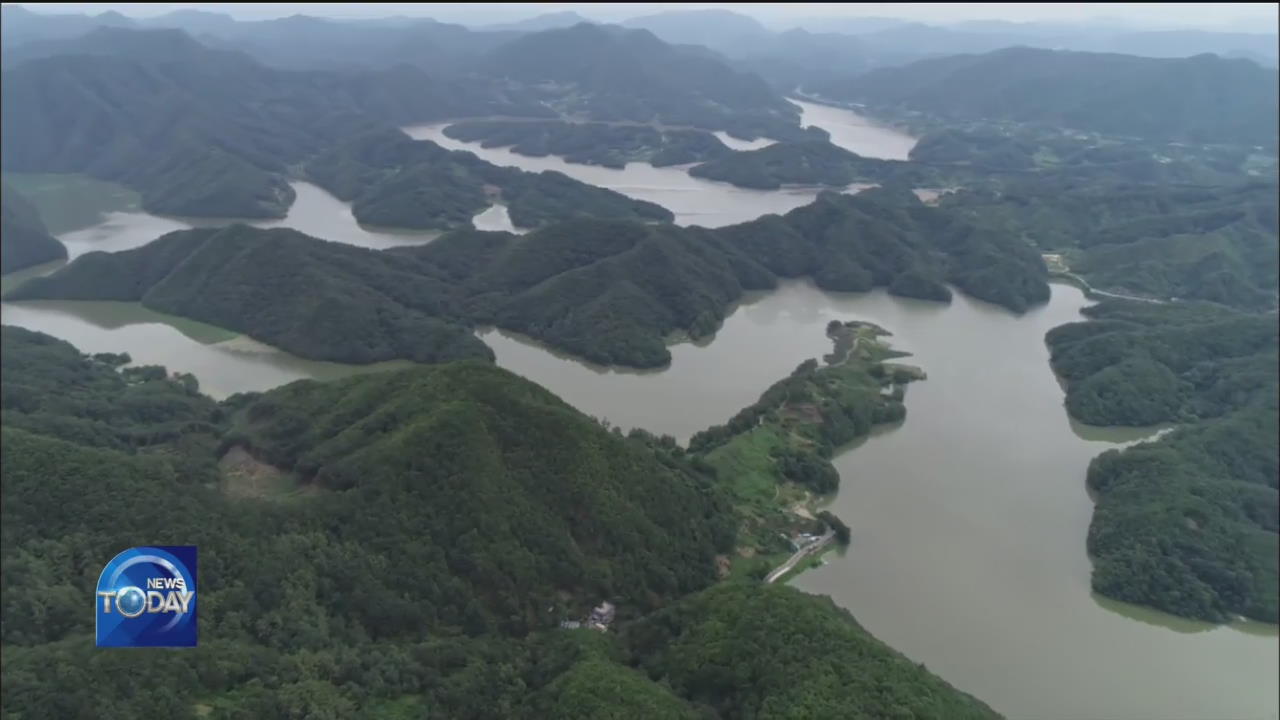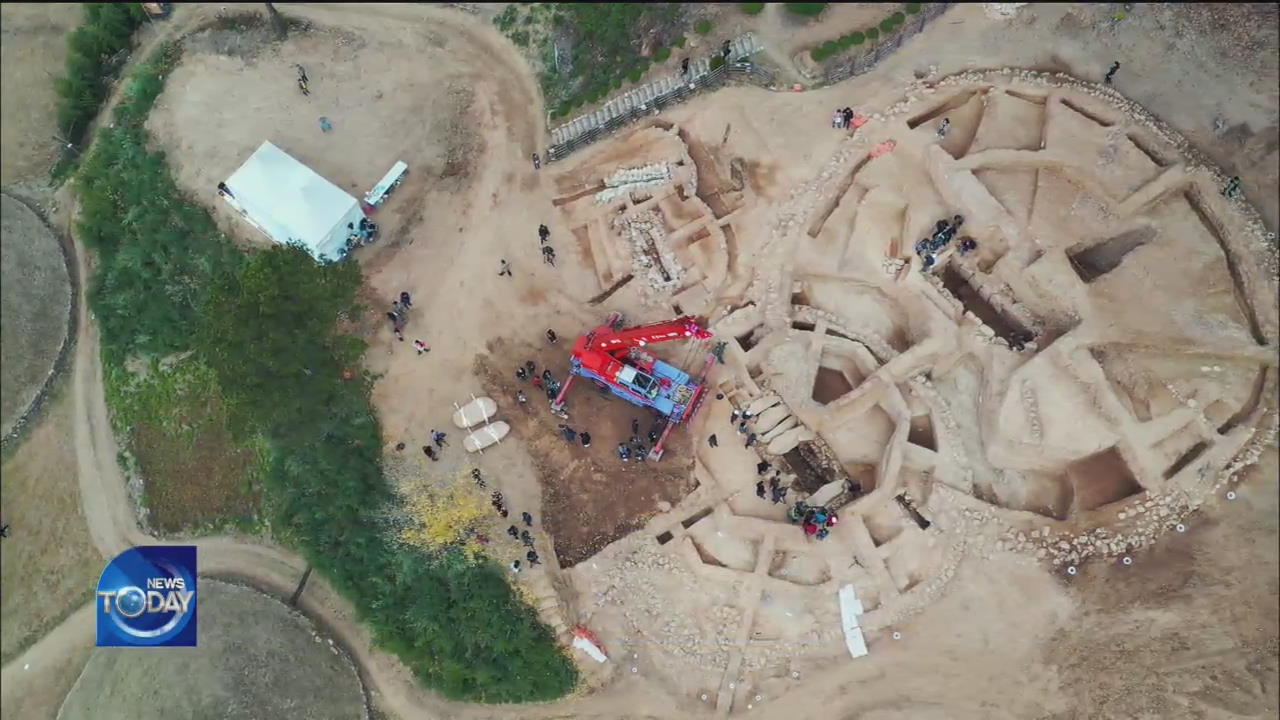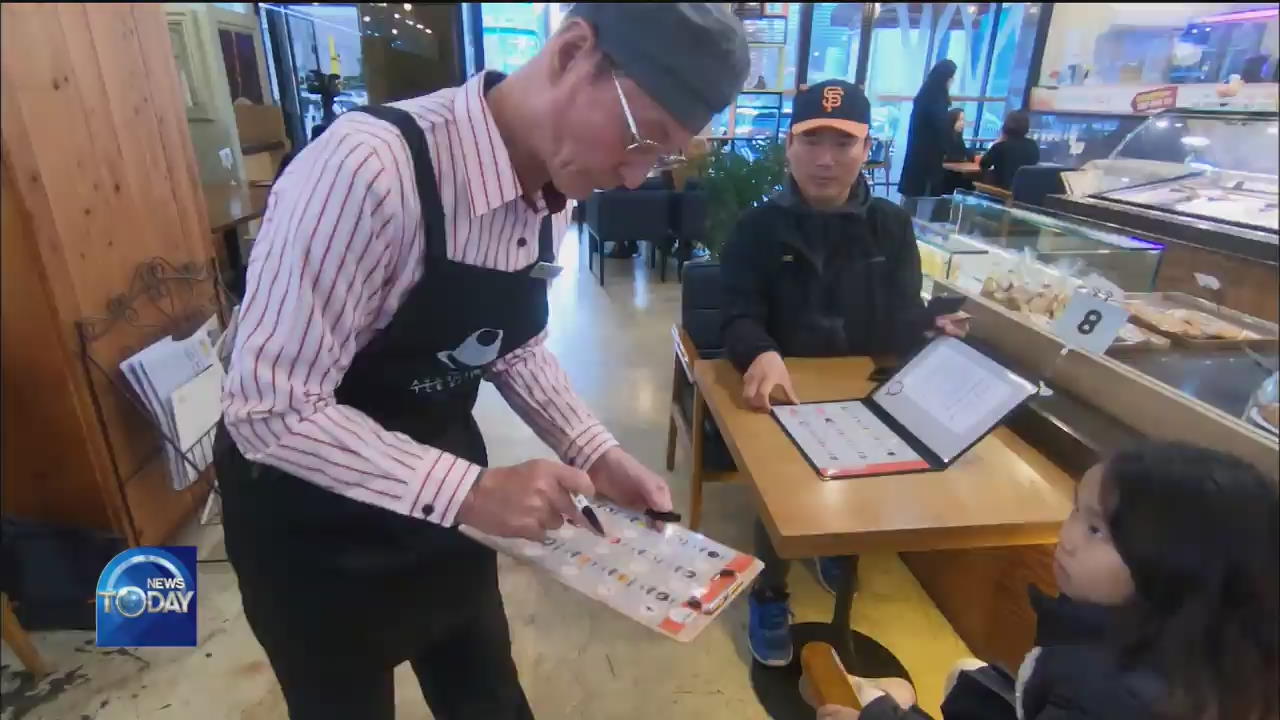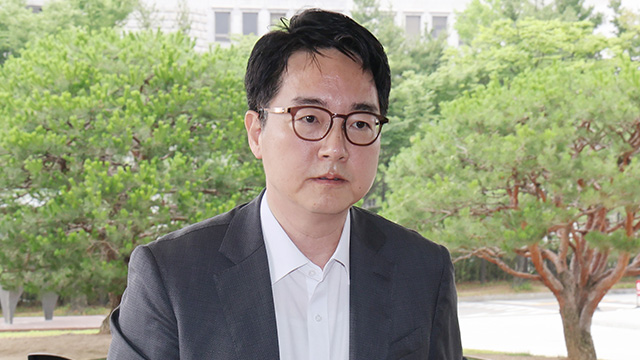TECHNOLOGY FOR MONITORING ALGAE BLOOM
입력 2019.11.29 (15:01)
수정 2019.11.29 (16:52)
읽어주기 기능은 크롬기반의
브라우저에서만 사용하실 수 있습니다.
[Anchor Lead]
A team of Korean scientists has developed a way to monitor algae blooms without running water quality tests by using a drone equipped with a special camera. This new technique is expected to speed up Korea's green tide response by expediting algae bloom detection and predicting spread patterns.
[Pkg]
This is Daecheongho Lake videotaped by a drone. It appears green everywhere, rendering it impossible to tell with the naked eye whether algae blooms have occurred. But this drone, equipped with a hyperspectral camera, is capable of sensing finer wavelengths of an object. The camera measures the wavelength of phycocyanin, one of the pigments contained in algae. The higher the concentration of green algae, the redder it shows up in the image.
[Soundbite] KWON YONG-HWAN(ELECTRONICS AND TELECOMMUNICATIONS RESEARCH INSTITUTE) : "The hyperspectral camera divides light spectrum information into 200 wavelengths. It can pick out a wavelength unique to green algae to determine the occurrence of green tide."
Until now, it took more than two days to collect a sample and analyze it to determine whether algae blooms have occurred. But this hyperspectral camera is capable of capturing an image so that the image itself could be analyzed immediately and accurately to detect the occurrence of algae blooms in a body of water. Big data analysis also makes it possible to predict how the green tide would spread with a 90% accuracy rate.
[Soundbite] KIM KYUNG-HYUN(NAT'L INSTITUTE OF ENVIRONMENTAL RESEARCH) : "We could dramatically reduce green tide occurrences if red clay and other algae removing substances are sprayed at locations where green tide is expected to occur."
In this year alone, water-polluting algae blooms have occurred in six bodies of water nationwide and green tide alerts have been issued for over 200 days. Now the research team is working furiously to find a way to produce hyperspectral cameras locally.
A team of Korean scientists has developed a way to monitor algae blooms without running water quality tests by using a drone equipped with a special camera. This new technique is expected to speed up Korea's green tide response by expediting algae bloom detection and predicting spread patterns.
[Pkg]
This is Daecheongho Lake videotaped by a drone. It appears green everywhere, rendering it impossible to tell with the naked eye whether algae blooms have occurred. But this drone, equipped with a hyperspectral camera, is capable of sensing finer wavelengths of an object. The camera measures the wavelength of phycocyanin, one of the pigments contained in algae. The higher the concentration of green algae, the redder it shows up in the image.
[Soundbite] KWON YONG-HWAN(ELECTRONICS AND TELECOMMUNICATIONS RESEARCH INSTITUTE) : "The hyperspectral camera divides light spectrum information into 200 wavelengths. It can pick out a wavelength unique to green algae to determine the occurrence of green tide."
Until now, it took more than two days to collect a sample and analyze it to determine whether algae blooms have occurred. But this hyperspectral camera is capable of capturing an image so that the image itself could be analyzed immediately and accurately to detect the occurrence of algae blooms in a body of water. Big data analysis also makes it possible to predict how the green tide would spread with a 90% accuracy rate.
[Soundbite] KIM KYUNG-HYUN(NAT'L INSTITUTE OF ENVIRONMENTAL RESEARCH) : "We could dramatically reduce green tide occurrences if red clay and other algae removing substances are sprayed at locations where green tide is expected to occur."
In this year alone, water-polluting algae blooms have occurred in six bodies of water nationwide and green tide alerts have been issued for over 200 days. Now the research team is working furiously to find a way to produce hyperspectral cameras locally.
■ 제보하기
▷ 카카오톡 : 'KBS제보' 검색, 채널 추가
▷ 전화 : 02-781-1234, 4444
▷ 이메일 : kbs1234@kbs.co.kr
▷ 유튜브, 네이버, 카카오에서도 KBS뉴스를 구독해주세요!
- TECHNOLOGY FOR MONITORING ALGAE BLOOM
-
- 입력 2019-11-29 15:05:32
- 수정2019-11-29 16:52:16

[Anchor Lead]
A team of Korean scientists has developed a way to monitor algae blooms without running water quality tests by using a drone equipped with a special camera. This new technique is expected to speed up Korea's green tide response by expediting algae bloom detection and predicting spread patterns.
[Pkg]
This is Daecheongho Lake videotaped by a drone. It appears green everywhere, rendering it impossible to tell with the naked eye whether algae blooms have occurred. But this drone, equipped with a hyperspectral camera, is capable of sensing finer wavelengths of an object. The camera measures the wavelength of phycocyanin, one of the pigments contained in algae. The higher the concentration of green algae, the redder it shows up in the image.
[Soundbite] KWON YONG-HWAN(ELECTRONICS AND TELECOMMUNICATIONS RESEARCH INSTITUTE) : "The hyperspectral camera divides light spectrum information into 200 wavelengths. It can pick out a wavelength unique to green algae to determine the occurrence of green tide."
Until now, it took more than two days to collect a sample and analyze it to determine whether algae blooms have occurred. But this hyperspectral camera is capable of capturing an image so that the image itself could be analyzed immediately and accurately to detect the occurrence of algae blooms in a body of water. Big data analysis also makes it possible to predict how the green tide would spread with a 90% accuracy rate.
[Soundbite] KIM KYUNG-HYUN(NAT'L INSTITUTE OF ENVIRONMENTAL RESEARCH) : "We could dramatically reduce green tide occurrences if red clay and other algae removing substances are sprayed at locations where green tide is expected to occur."
In this year alone, water-polluting algae blooms have occurred in six bodies of water nationwide and green tide alerts have been issued for over 200 days. Now the research team is working furiously to find a way to produce hyperspectral cameras locally.
A team of Korean scientists has developed a way to monitor algae blooms without running water quality tests by using a drone equipped with a special camera. This new technique is expected to speed up Korea's green tide response by expediting algae bloom detection and predicting spread patterns.
[Pkg]
This is Daecheongho Lake videotaped by a drone. It appears green everywhere, rendering it impossible to tell with the naked eye whether algae blooms have occurred. But this drone, equipped with a hyperspectral camera, is capable of sensing finer wavelengths of an object. The camera measures the wavelength of phycocyanin, one of the pigments contained in algae. The higher the concentration of green algae, the redder it shows up in the image.
[Soundbite] KWON YONG-HWAN(ELECTRONICS AND TELECOMMUNICATIONS RESEARCH INSTITUTE) : "The hyperspectral camera divides light spectrum information into 200 wavelengths. It can pick out a wavelength unique to green algae to determine the occurrence of green tide."
Until now, it took more than two days to collect a sample and analyze it to determine whether algae blooms have occurred. But this hyperspectral camera is capable of capturing an image so that the image itself could be analyzed immediately and accurately to detect the occurrence of algae blooms in a body of water. Big data analysis also makes it possible to predict how the green tide would spread with a 90% accuracy rate.
[Soundbite] KIM KYUNG-HYUN(NAT'L INSTITUTE OF ENVIRONMENTAL RESEARCH) : "We could dramatically reduce green tide occurrences if red clay and other algae removing substances are sprayed at locations where green tide is expected to occur."
In this year alone, water-polluting algae blooms have occurred in six bodies of water nationwide and green tide alerts have been issued for over 200 days. Now the research team is working furiously to find a way to produce hyperspectral cameras locally.
이 기사가 좋으셨다면
-
좋아요
0
-
응원해요
0
-
후속 원해요
0












![[속보] 내란 특검, 한덕수 전 국무총리·안덕근 산업통상자원부 장관 소환](/data/layer/904/2025/07/20250702_dLOmfA.jpg)
![[속보] 국민의힘 혁신위원장에 안철수 의원…“당 개혁 최적임자”](/data/layer/904/2025/07/20250702_Y70u81.jpg)



이 기사에 대한 의견을 남겨주세요.